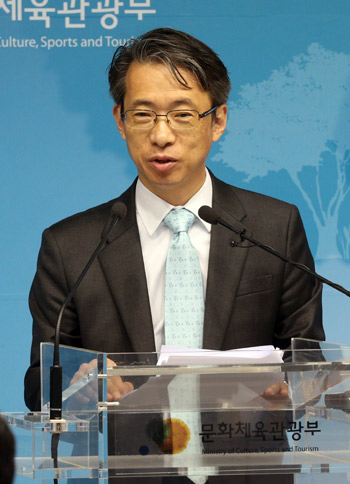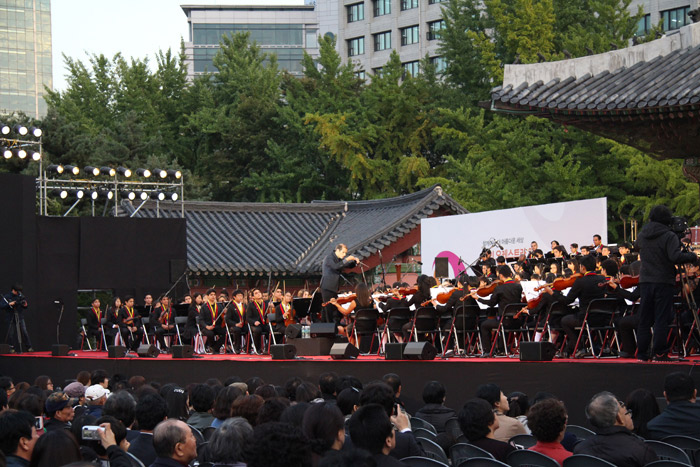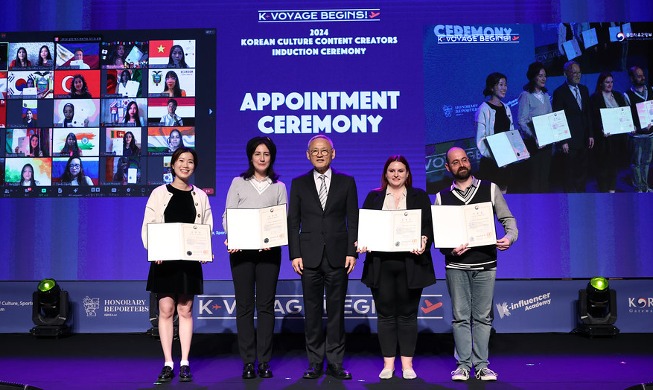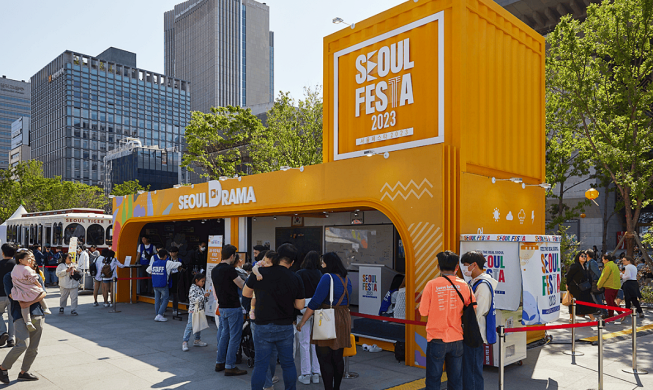-
 Korea.net's 24-hour YouTube channel
Korea.net's 24-hour YouTube channel- NEWS FOCUS
- ABOUT KOREA
- EVENTS
- RESOURCES
- GOVERNMENT
- ABOUT US

The government has announced plans to expand the range of culture and arts education across all age groups, from toddlers to the elderly. More opportunities to access the arts will also be offered to groups which have less access to culture and art experiences, including people with disabilities, multicultural families, North Korean defectors and active military personnel. Finally, the government will also increase the number of centers where Korea’s Orchestra of Dreams performs, increasing them to 50 by 2017. The Orchestra of Dreams is similar to Venezuela’s El Sistema; it’s a musical movement to help at-risk youth.
The Ministry of Culture, Sports and Tourism (MCST) announced its long-term development plans for culture and arts education on February 25. The plan contains three main strategies to make culture and the arts part of people’s daily routine. It aims at enriching the cultural content of people’s lives in order to help them enjoy more communication, sympathy and share happiness. The plan also sets forth eight core tasks and detailed action items for each of them. These action items include supporting arts education according to one’s age, setting up regional-based programs and fostering specialized art education-focused human resources in order to revitalize culture and the arts.
 Director General of the MCST’s Arts Policy Bureau Kim Taehoon said at the briefing that the culture ministry will inject into the project KRW 110 billion this year. The ministry, he said, will then expand the budget to KRW 223 billion by 2017 in order to foster talented, creative human resources in the culture and arts sectors.
Director General of the MCST’s Arts Policy Bureau Kim Taehoon said at the briefing that the culture ministry will inject into the project KRW 110 billion this year. The ministry, he said, will then expand the budget to KRW 223 billion by 2017 in order to foster talented, creative human resources in the culture and arts sectors.
To this aim, the ministry will expand the range of recipients of culture and arts education to cover all age groups, where currently arts education is targeted mostly at students and youth. The ministry hopes that people in all age groups will be able to enjoy the arts, regardless of where they are in their life cycle. The MCST will support the trial run of 50 arts-focused childcare centers and kindergartens this year and plans to increase the number of beneficiary organizations in the future. Starting this year, it will also support the “free semester” system of creative art activities and push for more culture and arts education for middle schoolers.
The culture ministry will provide more opportunities to those who have less access to culture and arts. It will provide extended arts education for children and youth who are at-risk, those who are in correctional institutions, disabled people and active military personnel, in cooperation with related government ministries that cover health and welfare, education and justice. Starting this year, it will provide arts education programs for 35 conscripted police units and at four North Korean defector accommodation facilities. The MCST will also dispatch an expanded number of arts education instructors to 150 disabled person centers by 2017.
The government also plans to expand the number of local centers where Korea’s Orchestra of Dreams performs. There were 19 centers in 2012 and the ministry hopes to increase that to 50 by 2017. The culture ministry will also foster small-sized local orchestras so that youth in smaller cities will have more access to culture and the arts.

The ministry will also send an increased number of arts education teachers to seniors' centers across the country. By 2017, it will provide an arts education to 40 organizations that participate in culture and arts festivals for the elderly, dubbed Cheongchunje.
Furthermore, under the plan, a weekend “culture school,” the Kkumdarak Saturday Cultural School (unofficial translation), will be launched at 1,000 cultural facilities across the country. By 2017, the ministry will also make available the “Art flower seed school” (unofficial translation) arts education program at up to 100 elementary schools in farming and fishing villages.
Under the plan, unused school buildings or industrial facilities in rural areas will become culture and arts education venues. By 2017, the ministry will transform ten shut-down schools or factory buildings into art experience camps, to be used on weekends or vacations and targeted at children and youth. It will also run art education centers for children at local community centers so that grass-roots art education can take place, emulating the Annantalo Arts Centers found in Finland.
By Yoon Sojung
Korea.net Staff Writer
arete@korea.kr
The Ministry of Culture, Sports and Tourism (MCST) announced its long-term development plans for culture and arts education on February 25. The plan contains three main strategies to make culture and the arts part of people’s daily routine. It aims at enriching the cultural content of people’s lives in order to help them enjoy more communication, sympathy and share happiness. The plan also sets forth eight core tasks and detailed action items for each of them. These action items include supporting arts education according to one’s age, setting up regional-based programs and fostering specialized art education-focused human resources in order to revitalize culture and the arts.

Director General of the Arts Policy Bureau Kim Taehoon of MCST announces the government’s long-term plans to develop culture and arts education, on February 25 at the Government Complex-Sejong. (photo: Yonhap News)
To this aim, the ministry will expand the range of recipients of culture and arts education to cover all age groups, where currently arts education is targeted mostly at students and youth. The ministry hopes that people in all age groups will be able to enjoy the arts, regardless of where they are in their life cycle. The MCST will support the trial run of 50 arts-focused childcare centers and kindergartens this year and plans to increase the number of beneficiary organizations in the future. Starting this year, it will also support the “free semester” system of creative art activities and push for more culture and arts education for middle schoolers.
The culture ministry will provide more opportunities to those who have less access to culture and arts. It will provide extended arts education for children and youth who are at-risk, those who are in correctional institutions, disabled people and active military personnel, in cooperation with related government ministries that cover health and welfare, education and justice. Starting this year, it will provide arts education programs for 35 conscripted police units and at four North Korean defector accommodation facilities. The MCST will also dispatch an expanded number of arts education instructors to 150 disabled person centers by 2017.
The government also plans to expand the number of local centers where Korea’s Orchestra of Dreams performs. There were 19 centers in 2012 and the ministry hopes to increase that to 50 by 2017. The culture ministry will also foster small-sized local orchestras so that youth in smaller cities will have more access to culture and the arts.

Korea’s Orchestra of Dreams and the Venezuelan Youth Orchestra of Caracas perform together on a special stage at Deoksugung Palace in Seoul on October 20, 2013. (photo courtesy of MCST)
The ministry will also send an increased number of arts education teachers to seniors' centers across the country. By 2017, it will provide an arts education to 40 organizations that participate in culture and arts festivals for the elderly, dubbed Cheongchunje.
Furthermore, under the plan, a weekend “culture school,” the Kkumdarak Saturday Cultural School (unofficial translation), will be launched at 1,000 cultural facilities across the country. By 2017, the ministry will also make available the “Art flower seed school” (unofficial translation) arts education program at up to 100 elementary schools in farming and fishing villages.
Under the plan, unused school buildings or industrial facilities in rural areas will become culture and arts education venues. By 2017, the ministry will transform ten shut-down schools or factory buildings into art experience camps, to be used on weekends or vacations and targeted at children and youth. It will also run art education centers for children at local community centers so that grass-roots art education can take place, emulating the Annantalo Arts Centers found in Finland.
By Yoon Sojung
Korea.net Staff Writer
arete@korea.kr













